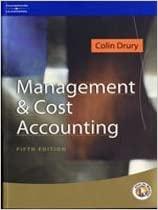Discussion of alternative investment appraisal techniques and the calculation of payback and NPV for two mutually exclusive
Question:
Discussion of alternative investment appraisal techniques and the calculation of payback and NPV for two mutually exclusive projects
(a) Explain why Net Present Value is considered technically superior to Payback and Account¬ ing Rate of Return as an investment appraisal technique even though the latter are said to be easier to understand by management. High¬ light the strengths of the Net Present Value method and the weaknesses of the other two methods. (8 marks)
(b) Your company has the option to invest in projects T and R but finance is only available to invest in one of them.
You are given the following projected data:
You are told:
(1) All cash flows take place at the end of the year apart from the original invest¬ ment in the project which takes place at the beginning of the project.
(2) Project T machinery is to be disposed of at the end of year 5 with a scrap value of £10000.
(3) Project R machinery is to be disposed of at the end of year 3 with a nil scrap value and replaced with new project machinery that will cost £75 000.
(4) The cost of this additional machinery has been deducted in arriving at the profit projections for R for year 3. It is projected that it will last for three years and have a nil scrap value.
(5) The company’s policy is to depreciate its assets on a straight line basis.
(6) The discount rate to be used by the company is 14%.
Required:
(i) If investment was to be made in project R determine whether the machinery should be replaced at the end of year 3.
(4 marks)
(ii) Calculate for projects T and R, taking into consideration your decision in (i) above:
(a) Payback period
(b) Net present value and advise which project should be invested in, stating your reasons. (10 marks)
(c)Explain what the discount rate of 14% rep¬ resents and state two ways how it might have been arrived at. (3 marks)
(Total 25 marks) AAT Cost Accounting and Budgeting
Step by Step Answer:






